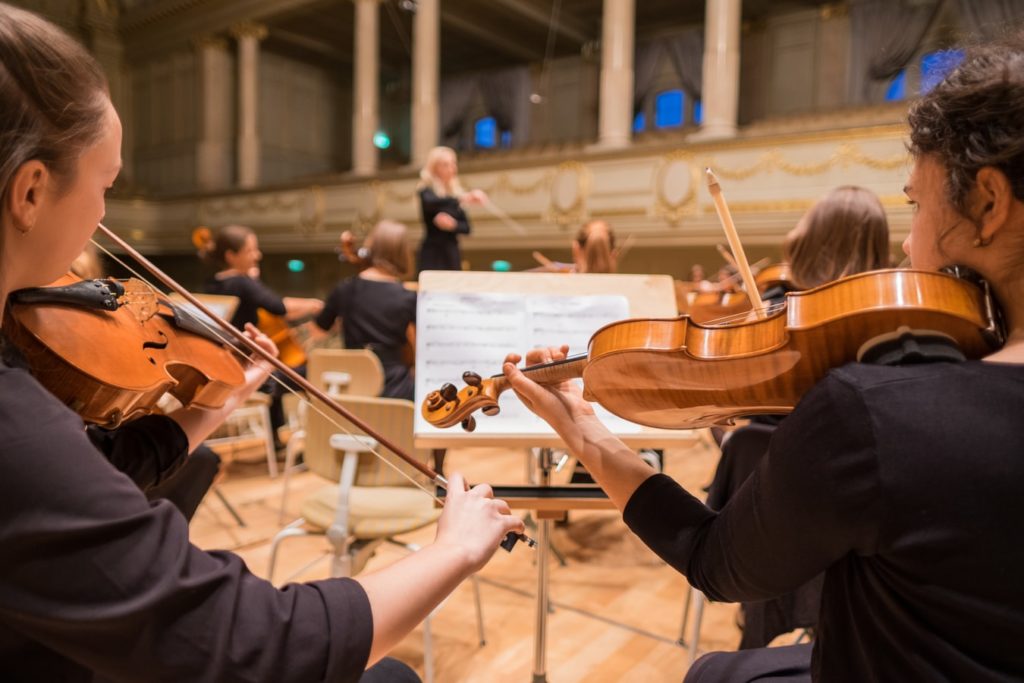The Rolling Stones’ success comes from each member having a distinctive yet complementary role. Richards is their spiritual leader, Watts the band’s backbone, Wood the mediator, and Jagger is in control of everything he can be – a chief executive in many ways.
Each of the band’s members is a talent in his own right, but it is the chemistry the band has on each of them that works best. The best teams are those who combine individual drive with understanding the importance and power of the team.
The resemblance with the Digital Studio I am working in is striking. When putting together our team for the very fist time back in 2018, it was like putting together musicians and asking them to play a song, without one single rehearsal.
Imagine how that sounds like…
I will continue my comparison. In my team there are people specialized in playing the violin, the piano, percussions, or who have an outstanding voice. And then there’s the conductor who tries to guide this wild bunch to play together.
A conductor is nothing without the musicians to play a concert. That’s the same with our Digital Studio.

conductor who takes care of the full experience lifecycle. Our developers, designers, functional and technical analysts are the musicians, each with their own skill and expertise to bring the solution to life.
Below, we list down the key characteristics of each role. Do you recognize yourself in any of them?
As a Service Designer, you…
- Understand the big picture and know how to connect the dots between stakeholders
- Try to make things better, seamless and natural
- Know how to read people and respond in an empathic way
- Trust their gut and work their way through the chaos
- Care about the end user
Check out how a typical day of a service designer looks like.
As a visual Designer, you…
- Find inspiration in everyday situations or objects
- Know how to communicate to pitch your ideas and designs
- Keep an open mind for changing trends and standards
- See criticism as a learning opportunities
- Adapt and deliver quality designs
One of our colleagues explains successful collaboration with Front-end developers on our blog.
As a Functional & Technical analyst, you…
- Know the ins and outs of your solution
- Don’t stop chasing until everyone is on the same page
- Look beyond the design and how it will work
- Transform ideas and designs into clear guidelines for developers
In one of our articles, we explain why everyone should know how to write a good user story.
As a Developer, you…
- Go the distance to get the job done
- Master the skill of self-learning and make connections on the fly
- Stay patient, figure out any problem and fix it
- Build, review and improve your own code and those of your peers
- Bring solutions to life with ones and zeroes
Read more on the life of an experience developer in one of our previous articles.
If you resonate with any of these characteristics, you might be a good fit to our team!
Check out our open vacancies for experienced hires, and look out for offers starting with “Customer Strategy”! If you are still in school, have a look at our internship program in Technology. If you’re graduating soon, check out our graduate offers to kickstart your career with us, in Technology as well.
Playing with one sound in our Digital Studio
In our Digital Studio, we married design thinking with agile delivery so that we could transform ideas into solutions that really matter for end-users in only a couple of months time. Creating value as a team and for people with different profiles, it is not always easy but it is key to bring this ambition to life.
For a team to play with one sound, the following factors are key:
- A good team needs to have focus on a clear vision with a set of well defined and scoped goals or objectives
- A good team needs to have a contagious flow, working as a single organism and moved by the same purpose
- A good team needs a climate that stimulates collaboration, candor and fun
- A good team needs a process they can follow to structure their work and outputs
Which role do you play in your team’s symphonic orchestra? Are there any pittfalls you encounter when working as a team and what factors are key for you to play with one sound?
We’re curious to hearing your voice so feel free to leave us a comment!




